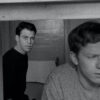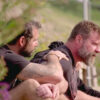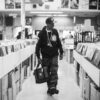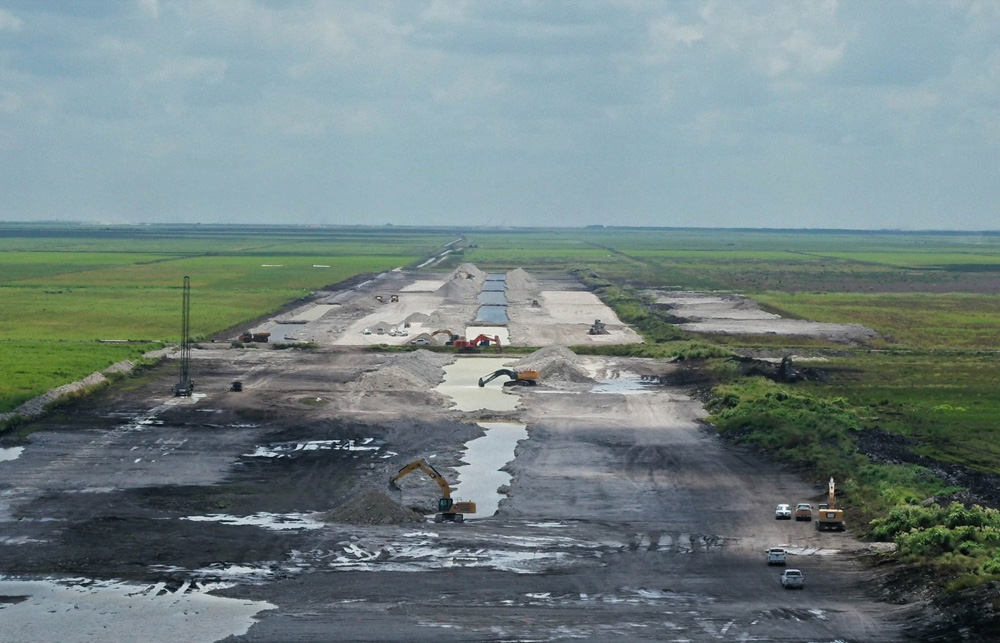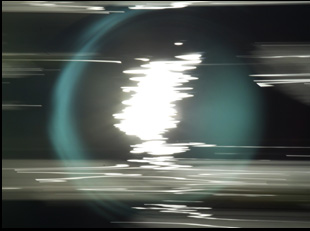While going out in search of the damage done to the Florida Everglades for “River of Grass,” Sasha Wortzel may have been often frustrated to see how the ecosystem in her old stomping grounds has been upended by a variety of factors in recent years, but she could take heart in seeing another develop in front of her eyes as well.
“Over the course of the making of the film and participating in these walks, I started to re-encounter people and to see other people naturally coming together who I had met separately, so there is some interconnectedness,” said Wortzel, who took her first steps towards the project by participating in prayer walks organized by Betty Osceola of the Miccosukee Tribe to observe the issues now plaguing the wetlands. “The act of making the film and being in all these places, it started to really started to feel like a larger ecosystem and community that was more interconnected than I ever realized.”
Wortzel needed only to look around the room at the film’s recent hometown premiere at the Miami Film Festival to realize the links she had illuminated if not made with turning the camera on those who have now heeded the warning of Marjory Stoneman Douglas, whose 1947 book gives the film its title. Even then, the late journalist and conservationist warned against the dismissal of the land as a swamp despite protecting the Miami River from which much of the state’s water supply was derived and an eagerness to spur on tourism threatened to imperil the natural balance that a variety of lifeforms, including humans, relied upon for generations for sustenance when the Miami Airport was constantly looking to expand. Though her efforts and those of indigenous communities spared some erosion and extinction of native species, the dangers posed to the region seem greater than ever as the volatile shifts in the weather above reflect the growing agitation on the soil below.
“River of Grass” captures the extraordinary in ways both good and bad when once-unpredictable hurricanes and the decrease in previously plentiful schools of fish have become a new normal, due to the disruptive activities of local industry. However, any sense of despair is countered by the natural wonder that persists against all odds as you’re put in touch with breathtaking landscapes and Wortzel, who draws on an artistic practice that’s encompassed a many mediums before making her feature debut, marvelously manages to allow the unique environment to open up to the viewer. Gently offering up various guides in Osceola, Douglas in a rare and comprehensive interview towards the end of her life, and herself among others, to help quantify what the land means and what’s been lost amidst what otherwise is an overwhelming sensory experience, the director turns a tale of decay into one that expands its presence in the mind as it illustrates a vast network of people that would be affected if it were all to go away and fight to protect it.
After first premiering at True/False earlier this year and making waves in Florida, “River of Grass” is now heading north to Toronto for Hot Docs followed by a screening the following week at the Margaret Mead Film Fest in New York and Wortzel graciously took the time to talk about how she found an unusual approach to tackle such urgent issues, the modern reverberations of Douglas’ prophetic text and giving audience such a deep sense of place.
In terms of my larger body of work and the kinds of stories I’m interested in, I’ve really tended to be drawn to making work about people and sites and stories that have been excluded or erased from the historical record. I was really thinking about what are maybe some of [those] stories of where I’m from and the project started really because I was home one time. I had been living in New York and I was home visiting my family and I had just noticed over my lifetime that the water was growing sicker and sicker. There was this massive toxic algae bloom and tons of wildlife were dying and I realized that I knew it had something to do with the Everglades ecosystem, but that I didn’t fully understand why this was happening, so the film really started with a question of how did we get here, from a place of feeling a lot of grief and unclear on what one could do about it.
I applied to an artist residency in the Everglades National Park and I really started with reading what is still today considered the essential resource guide to the Everglades, “The Everglades River of Grass” by Marjorie Stoneman Douglas and that book really plugged in a lot of the dots for me. It very moved by the poetry and the lyrical manner in which it was written and also in the way in which that it broke down the science and the ecology and explained how the water system worked. It also told the story of the plants and the people on that land and how we had been shaping the Everglades and the Everglades have been shaping us. I thought that I would approach a film to tell this story by reimagining this book and bringing it up to the present day.
During that time at the Everglades National Park residency, I started meeting a lot of the people that would ultimately be participants in the film, particularly Betty Osceola at her airboat business off Tamiami Trail [that she ran] with her late husband Jimmy. I told her I was beginning to research a film and she took me out and we talked for a very long time out on the water and then when we got back, she let me know that she was organizing a prayer walk around Lake Okeechobee where people would be invited to walk for seven days, 118 miles around the lake and she invited me to join her.
I participated in three or four of Betty’s prayer walks over the course of making the film and filmed them and it became clear to me in the edit once I was going through the material that the walk in a way could in a way both thematically but also geographically move us through a complex ecosystem in a landscape and really bring us into these different parts of the region where each story was taking place and that could be a structuring device, this durational act of walking and listening.
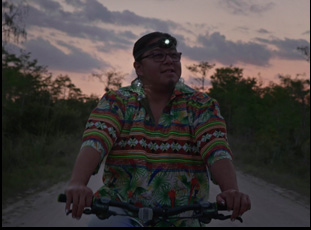
I frequently work in this way where all my projects begin in cinema. The intention is to make a film that will be viewed communally in the dark because that’s a really important experience that unfortunately is on the decline. Yet I’m also really interested in how elements of that kind of the cinematic work can get reconfigured for a space or site-specific installation and how that can activate audiences and an experience in a different way. I see it all as as research towards the same goal, but they show up in these different kind of configurations.
I was working on creating these sculptures and the sound installation and a lot of the material that was shown in my gallery work, including the works in this exhibition in New York right now at the International Center for Photography, those those all in a way ultimately came back into the film. I got to experiment and play with things. I spent a lot of time just doing my own field recordings and a lot of those sounds became a sound installation piece and then those ultimately became part of the soundscape of the film. There’s also video works that I shared in the gallery space — one is of this bobbing sunset that ascends in the sky descends — that ultimately became part of the film. So there’s this exchange that happens, and I’m really trying to create, especially with this work, something that feels very somatic and working in that way allowed me to create hopefully what is a more of an immersive experience even when you’re sitting in a cinema.
What was it like to bring people into this place you knew well visually?
I worked very closely with my cinematographer J. bennett, who is incredible and also just happens to be a fifth-generation Floridian with ancestral ties to the Everglades. It was frequently just the two of us working in the field and one of the goals for me in approaching filming landscape was to film the land as if I was filming any of my participants in my film — as a foregrounded character, not not just simply background. And a lot of that is spending a lot of time out in the greater region of the Everglades, which can contain an urban city like Miami, but also spending a lot of time out in the wetlands and the wild ecosystems. We knew that we wanted to hit capture each of these places and we spent a long time just setting up stationary shots and just letting things unfold, playing with distance and try to get the vastness and the horizontal nature of the landscape and then also to be really close and intimate on certain details, as if your body is actually placed inside of an ecosystem.
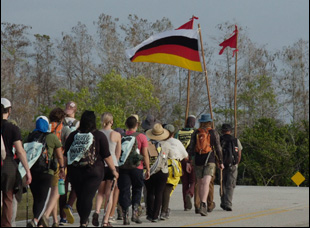
Yeah, the film was always going to contain these verite portraits of people and the landscape and I was working with selecting passages from Douglas’s book “River of Grass,” but it really was a huge turning point when I had a dream. Marjorie came to me [in my dream] and told me that she needed to be in the movie too and when you have a dream like that, it’s like, “Oh, I should listen to this.” So I began researching where there were interviews and archival footage of her and I frequently do archival research first and then film something in conversation. In past works I’ve started with archival, whether it’s one image or a clip of something and then that unfurls a whole research process and then often informs something that I’m writing and filming and documenting in the present.
Here it was interesting and like a reverse process for me where I was filming and then found this snippet of an interview with her in the Wolfson archives in Miami. It struck me that what she was saying in this interview when she was in her nineties in the 1980s was so resonant with what’s happening today and I wanted to know if there was more. With my incredible archival producer Monica Berra, we were able to get the raw footage digitized from the Wolfson archives and a lot of discoveries were made by finding that footage. Once I started doing deeper archival research and bringing more and more material into the edit, it really mirrored exact shots I had composed or ideas that I had. That helped me to find new discoveries in the storytelling by placing those things in conversation with one another and giving myself actually permission to mix the present and the past. That’s when the Marjorie became not just a voice through her writing but a character in the film and she lent a lot of levity and humor that we needed because some of that subject matter is, quite frankly, hard.
What was it like to incorporate your own voice into this? There’s a really great sequence built around how the present doesn’t align with how you remember what the land looked like in your own upbringing in the Everglades?
It’s interesting because it always was a personal story, but I hadn’t intended to include my particular perspective and voice in the way that ultimately wound up in the film. I was editing alongside my editor Rebecca Adorno and we had assembled these incredible verite scenes and had begun fleshing out these passages from Marjorie’s book and it became clear that it really needed some kind of container to hold all these seemingly disparate yet connected parts. So Rebecca and my producer Danielle Varga really encouraged me to include my voice because when I talked about the film, it was from this very personal place. I resisted it for a long time, but I ultimately realized that it did need some grounding perspective, so I began writing and I remember [that sequence] was one of those first things that I wrote. It was a long edit and I started cutting those scenes and others with my voice and finding a new structure for the film, alongside my wonderful consulting editors, Todd Chandler and Maya Daisy Hawke, who really helped me through a long edit to find that structure and that balance.
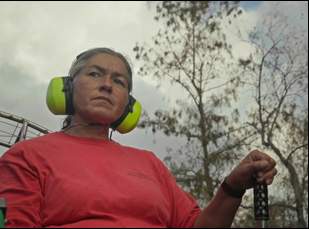
I love music and in my edit, I’ll frequently start with sound. I’ll lay down and create a soundscape and then start editing to it. I had brought in some temp music that had a vibe that I wanted, but it really all came together when I began working with Angelica Negron on the score. We spent a lot of time actually watching each scene together and really talking about it and what maybe the scene needed and what some of the sounds were and some of the themes in the film and she created a series of sketches that I was able to play within the edit. I’m really thrilled with how it came together.
What’s it been like to start getting this out into the world?
It feels like a miracle every time you finish a film because it’s so difficult and it’s been really overwhelming and incredible. We had an incredible reception at True/False and bringing the film home for our Florida premiere at the Miami Film Festival was incredibly meaningful. The festival added a second screening and it sold out immediately. We had to add a row of holding chairs to accommodate all the people in the rush line and the Q&As were very engaged and I just felt that the film seems to really be resonating with people. It was really remarkable to also watch the film with many of the team and participants in the film — the larger network of people who’ve supported this work over its making, whether that was taking me out on an airboat ride or just talking to me about something complex related to legal issues of the Everglades or the hydrology — and having all those people come together and receive the film and feel like it’s theirs now, not just mine has been a really beautiful experience.
“River of Grass” will next screen at Hot Docs at the TIFF Lightbox in Toronto on April 28th at 4:45 pm and April 29th at 10:45 am and at the Margaret Mead Film Festival in New York at the Kauffman Theatre on May 4th at 3:30 pm.

